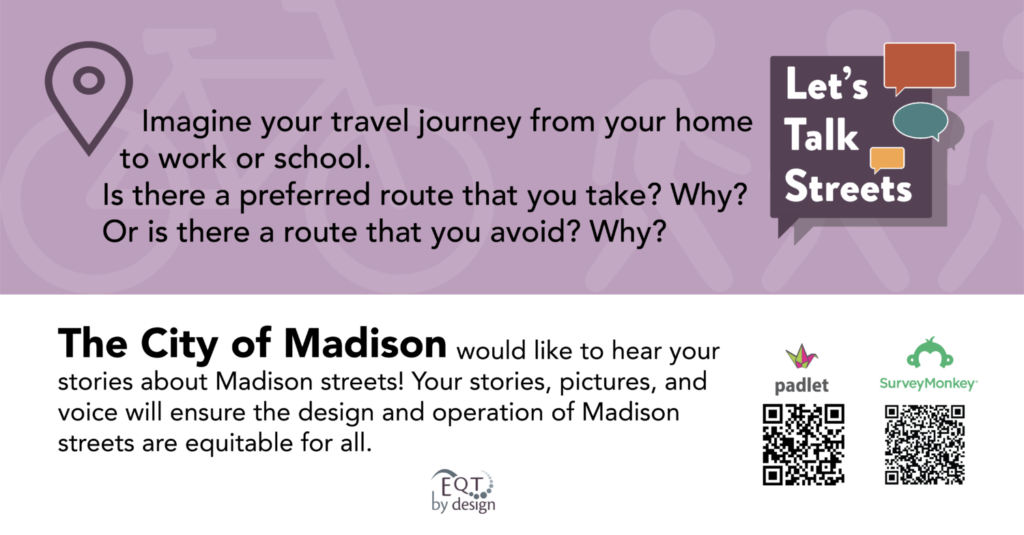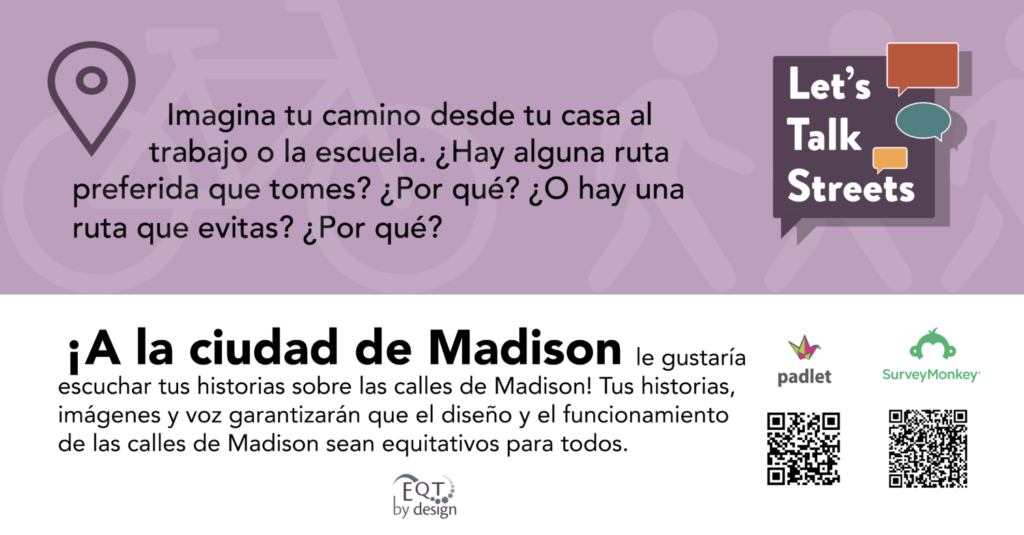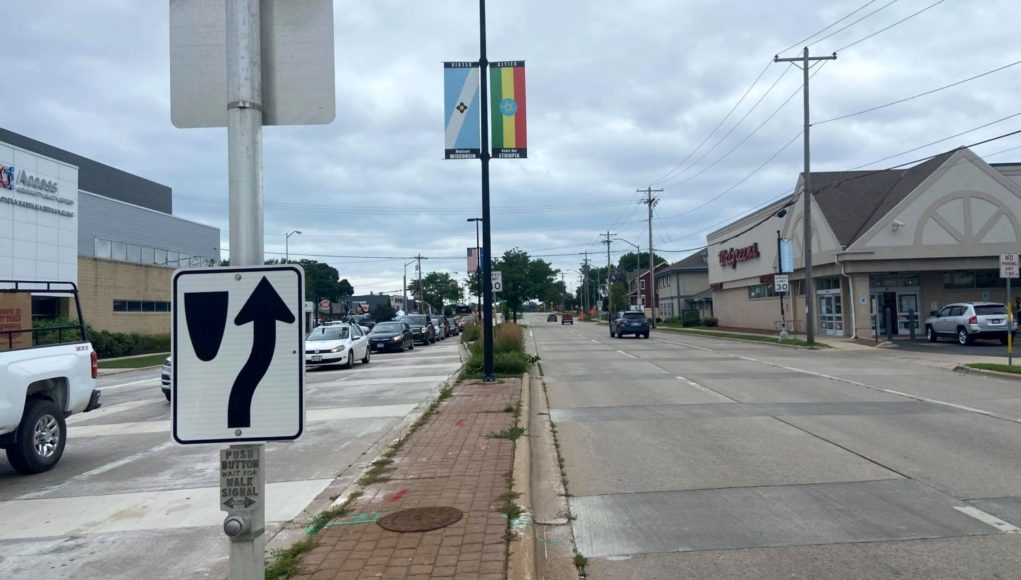“Our elders talk a lot about lost community but what we don’t necessarily talk about is how streets have impacted the loss of community. Our streets weren’t always built this way and our elders lived in cities and neighborhoods and communities that weren’t strictly designated for cars,” says Matt Braunginn, an engagement partnership consultant working for EQT By Design. “And that changed in their lifetime. And there were stronger communities before and there are a lot of reasons why – street design is one of the reasons why we have more fractured communities.”
Braunginn is working with community partners and the City of Madison to listen to people’s stories to help them shape the conversation on how the city can design streets that support the needs of its community members. A major goal is to hear from marginalized groups that are not often heard from.
“Any complaints that people have had about their streets; this is the time and place for it,” Bruanginn says. “Any time they wish something would be different in the neighborhood or their transportation journey, this is the time and place for it. We’ve all had those moments in Madison where we wish something would be different while we were getting around. This is a chance where people’s voices can have a real impact a couple of years down the line.”
The City of Madison is currently working on multiple interrelated initiatives in 2021 related to street design and operation and are hosting a series of studies that will influence Madison’s streets in the years and decades to come. This second phase comes after the virtual and interactive sessions were held last month as part of a partnership of City of Madison staff, Toole Design, and EQT By Design.
“We’re moving into the next phase of community engagement where we are targeting some specific communities but we’re also doing some community-wide data collections on two fronts – a community survey and storytelling. Both are attempting to get at the same thing: What folks want to see in street design,” Braunginn says.
“I think the storytelling aspect is a unique opportunity for folks to give a little bit more of the specific aspects of what they are looking for,” he adds. “It’s telling your stories, your experiences, your views and your vision about street design and transportation in Madison. We want people to show us what it looks like with their own eyes of what they like, what they don’t like, and what they want to see.”

They want to hear stories about people’s transportation journey as well as their immediate commuting. “Really thinking holistically about better street design and better-connected communities,” Braunginn says. “We also have the survey that people can fill out, as well. They can do either or if they like.”
It’s part of a large undertaking of what they have been calling the Let’s Talk Streets initiative by the City of Madison.
“It’s increasingly important in a Madison, that is changing demographically, to know exactly where people are at and what they would like to see in their communities as street design absolutely leads to other types of development. This is a chance for people to have a say in what their community will look like in a real way.
“All of the work that we are doing now will inform the next stage,” Braunginn adds. “This is really a multi-year type of project and there will be a lot of engagement.”
Braunginn adds that the “more people that are engaged, the better information we will have about what they will like to see.”
“This information will be directly reported to commissions that — for many people — can be hard to interact with for multiple reasons – date, time and location of the meetings, for example. We can serve as that middleman for people’s voices on what they would like to see in streets, in transportation, in neighborhoods and in getting around Madison,” he says.

This current storytelling and surveying phase will probably go on until the end of the month. Braunginn says it’s important to have everybody involved because street design in cities is an important aspect of racial justice and often reflects the historical inequities in how cities were designed and built.
“Better streets mean better-connected communities. I think there are some prime examples in Madison that highlight why it’s so important,” he says. “Look at South Park Street versus Monroe Street. Both high traffic streets, Park Street a little more than Monroe Street. One built for neighborhoods; communities and walking … the other built for moving cars.
“The demographics also tell a story on who the streets are built for as we look at the design when you look at the demographics of Monroe street versus Park Street. Our streets are part of our larger community story. That’s why the community input is so important.”










